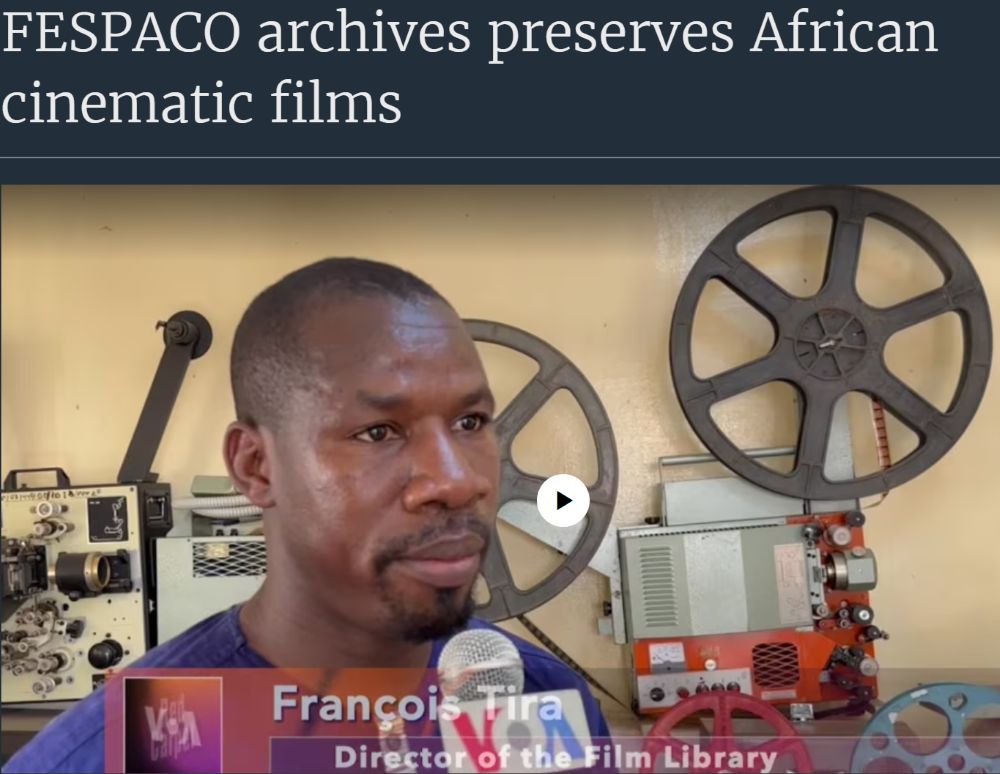The Pan-African Film and Television Festival of Ouagadougou (FESPACO), which recently wrapped up its 29th edition, established the African Film Library of Ouagadougou in 1989 during its 20th anniversary. Located at FESPACO’s headquarters in Burkina Faso, the institution collects, preserves, and promotes African films and related materials, making it one of the continent’s largest film conservation centers.

From an initial 40 films, the library’s holdings have expanded to over 12,000 works across various formats, including 35mm, 16mm, UMatic, VHS, Betacam, DVD, Blu-ray, and digital media. While many of these films have screened at FESPACO, the collection is not limited to festival entries. It encompasses documentaries, narrative feature and short films, making it an extremely valuable resource.
Beyond the screen, the library maintains a comprehensive documentation center housing more than 6,000 photographs, over 500 film posters, 228 books on cinema, scripts, catalogs, and press materials—all supporting research into African cinema’s history and evolution.
The library has implemented both digitization and film restoration initiatives, recognizing the necessity of each—digital preservation expands accessibility, while properly stored celluloid reels can last many lifetimes; emphasis on properly stored.
The European Union, via initiatives like the ACP-EU Culture Programme, has contributed funding for conservation and restoration efforts, strengthening the library’s capacity. However, long-term financial sustainability is not clear, as there is no obvious revenue model for ongoing restoration work—for example—particularly given the slow, specialized process that may only restore a fraction of films annually. However, this certainly remains preferable to neglect.
The good news is that FESPACO and African film institutions retain custodianship of the archives, meaning that decision-making authority remains with local stakeholders, despite EU funding.
There is concern though that digitized films from the archive are not widely accessible online for global audiences. Past initiatives to provide centralized digital access to vast collections of African films—like MultiChoice’s African Film Library of approximately 500 titles (made available in 2012)—have been inconsistent. Realistically, there has to be a commercial case unless it’s a non-profit venture. In the MultiChoice scenario, the 500 films later disappeared from its flagship streamer Showmax some years later, reportedly due to low viewership. However, I was told that there are plans for future reintegration.
The pending Canal+ acquisition of MultiChoice may influence the future of the archive. If Canal+ prioritizes heritage content as it expands its African footprint, it could accelerate any plans to bring these films back into circulation.
Currently, FESPACO’s massive library of titles are distributed via screenings at festivals, educational institutions, and initiatives like the African Film Heritage Project (AFHP)—a joint initiative between Martin Scorsese’s Film Foundation, UNESCO, Cineteca di Bologna, and the Pan African Federation of Filmmakers (FEPACI)—which locates, restores, and releases historically significant African films.
While discussions around a centralized African digital film archive continue, I am aware of no major initiative that has been formally announced.
Watch VOA’s Kader Traoré tour FESPACO’s film library with its director, reporting from Ouagadougou a few days ago.